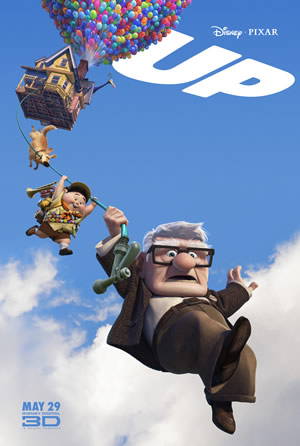
Two weeks ago at the NAB tradeshow, I had a chance to see some very impressive 3D clips from Pixar Animation Studios. The company’s latest animated feature, Up, will be released to theaters in 3D on May 29. The clips were presented by Bob Whitehill, stereoscopic supervisor, and Josh Hollander, director of stereoscopic production, both from Pixar. They spoke about how the company is transitioning from 2D to 3D.
“Up was well underway when we started to approach it in 3D,” explained Whitehall. “We just had a great presentation with the creative leadership with Toy Story 3, so we’re thinking about 3D earlier in that pipeline.” The timing for introducing 3D into the pipeline will be determined by the director of each project. “We’re a story- and director-driven studio,” said Hollander. “We’ve found through our testing and production process thus far that beautiful composition equals pretty good 3D.”
What technical lessons have they learned about 3D from Up? “Long lens don’t work,” said Whitehall. “Super-wide lens don’t work. Depth-of-field foreground objects don’t work as well as depth-of-field background objects do. It’s much more effective to have geometry that leads your eye from the foreground to the background.”
Pixar is also learning how to use 3D to enhance, rather than detract from, the story and characters. “Patrick Lin, the director of photography for Up, came up with this great visual structure between a square and a circle,” explained Whitehill. “The square sequences are ones where Carl felt trapped, alone, and confined in his house. The circle sequences were ones of adventure and happiness. So in the sequences when Carl is with his wife Ellie, those are circle sequences. We had more depth there, and the characters felt rounder. When he is alone, Carl felt flatter.”
Extended out to 3D space, a square can become a cube, and a circle can become a sphere. Accordingly, in the trapped sequences, Carl seems to be locked into a cube, because he remains positioned primarily behind the screen. Conversely, in the adventure sequences, Carl and his world become more rounded and fuller, with the sphere of action now extending out from the screen.
“For the first time, Carl starts to emerge out into audience space and has that freedom of movement in space to work with,” Whitehill added. “Whether these things will really hit people or not, it’s still a mystery, but our goal is to use 3D to mirror emotion as much as possible.”